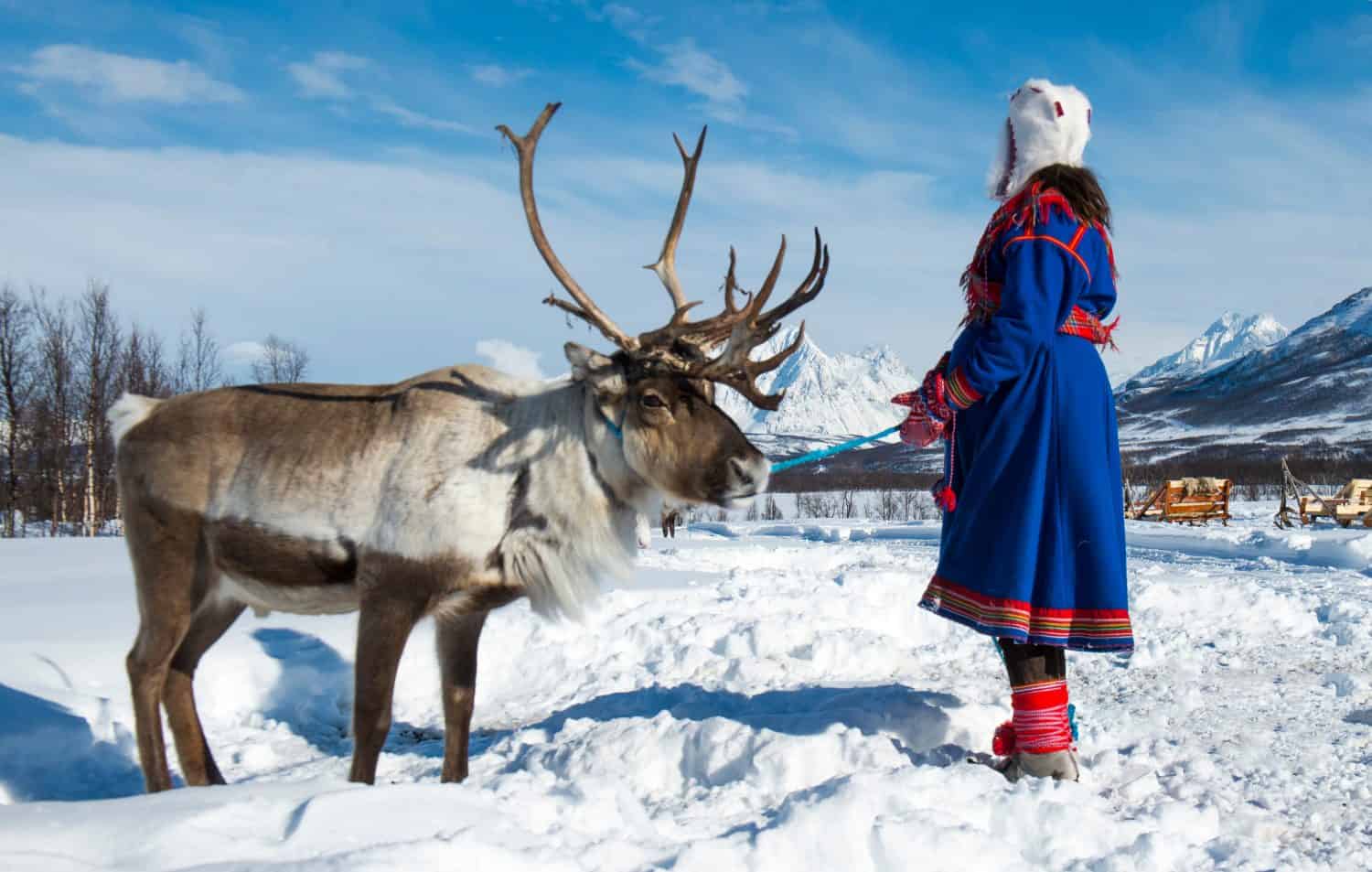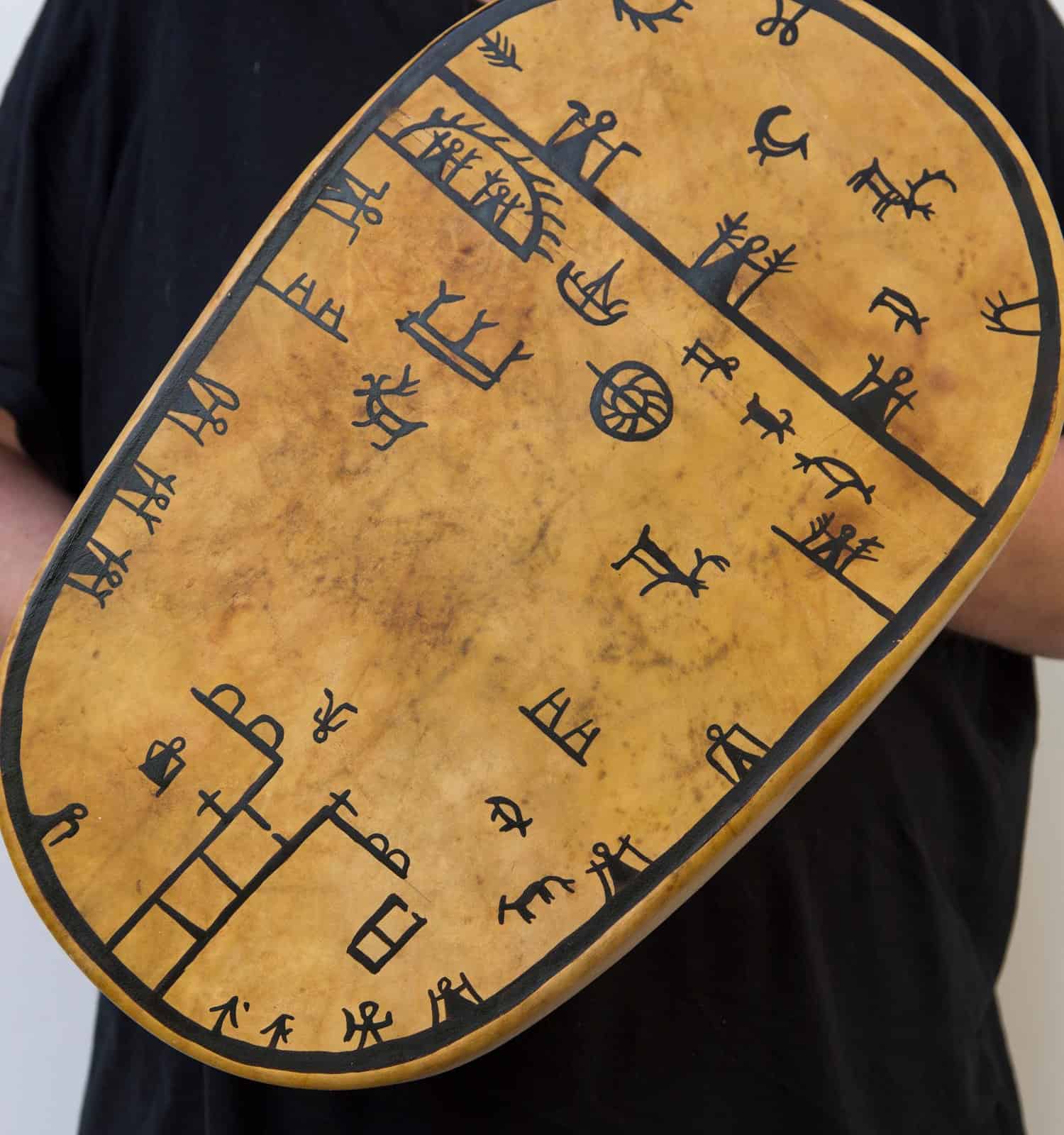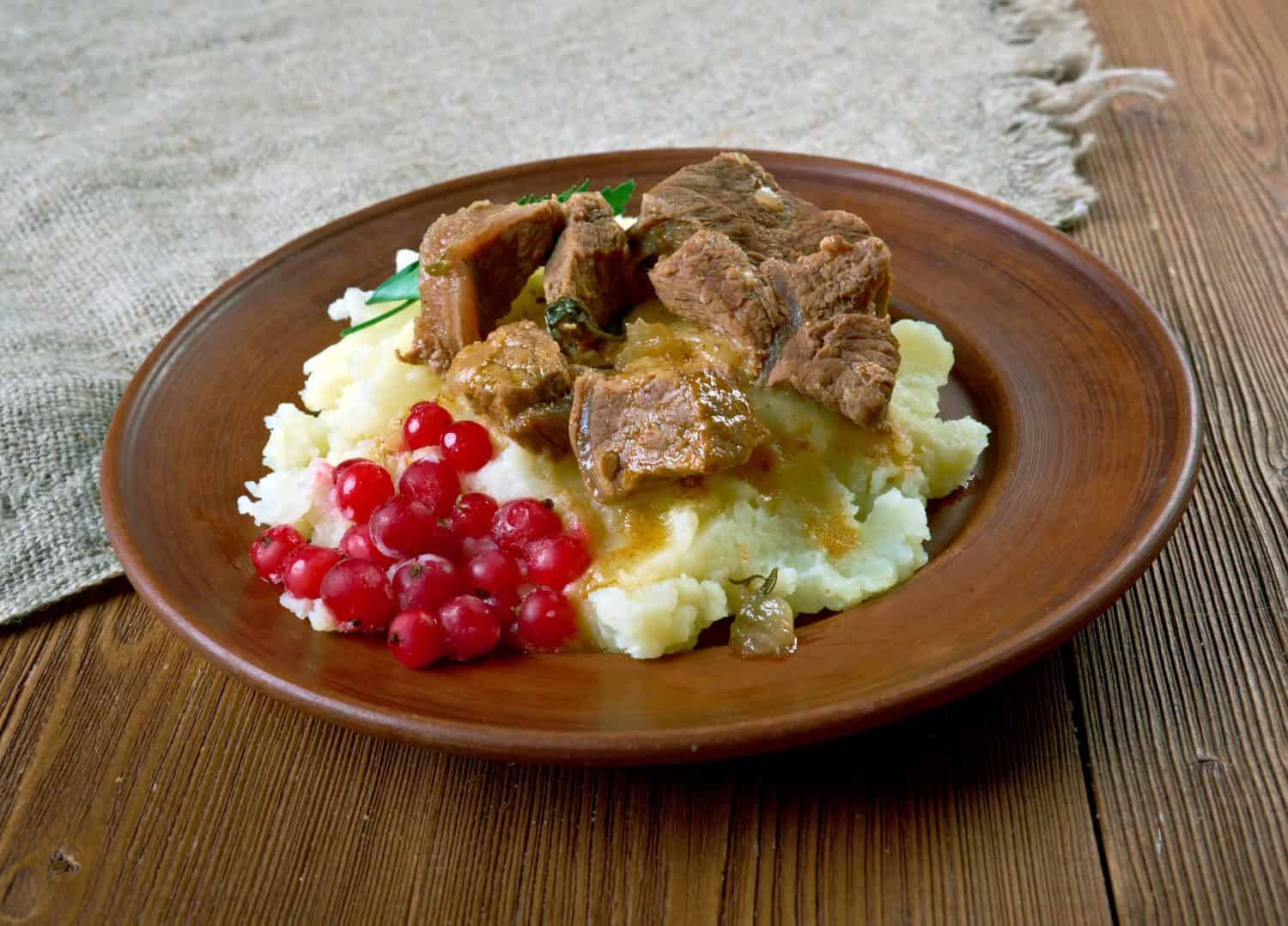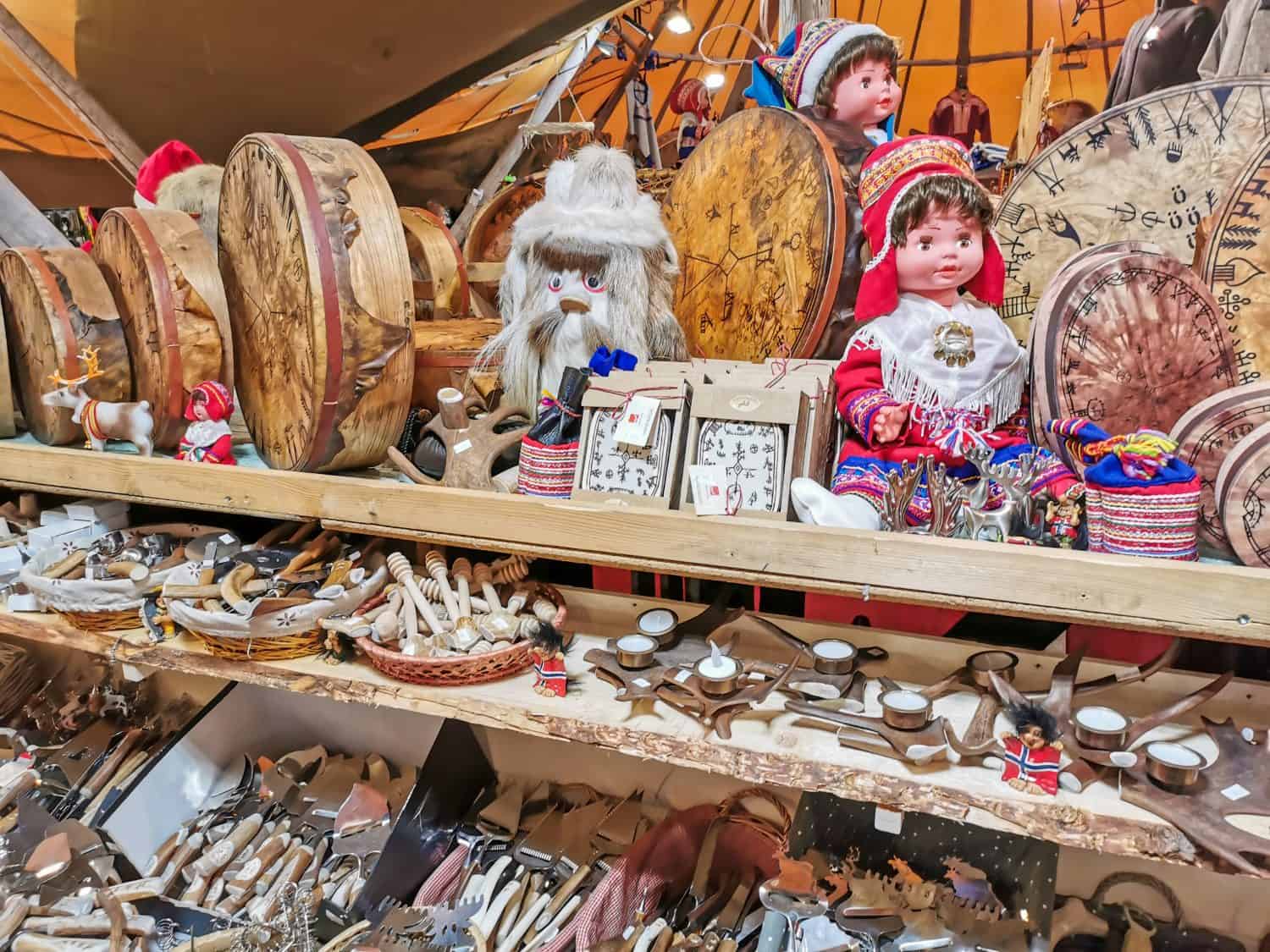One of the oldest indigenous groups in Europe still lives in their traditional homeland, with many maintaining their culture and beliefs despite modern pressures. This group, known as the Sami, also spelled Sámi or Saami, lives in the northern parts of Norway, Finland, Sweden, and Russia. This area sits partially in the Arctic Circle, and a significant aspect of Sami culture involves reindeer herding. This people most likely came to their traditional homeland around the beginning of the Common Era, traveling from today’s western Russia. Today, many Sami remain who practice the same culture and beliefs, all the while facing modern challenges.
Name

Before turning to semi-nomadic reindeer herding in the 17th century, they mainly subsisted as hunters and gatherers.
©V. Belov/Shutterstock.com
Sami is the name Sami-speaking people call themselves. Historically, outsiders referred to them as Finns, a term related to an Old Norse word meaning “to find.” However, this term eventually became associated with other groups distinct from the Sami.
Another term often associated with them is Lapp or Laplander, referring to them as the people from Lappland, Finland’s northernmost region. However, modern Sami dislike their association with these terms and consider them offensive. They prefer the use of their chosen names for themselves and their homeland.
Location

The national laws of several countries, including Finland, recognize parts of the traditional Sami homeland.
©Designer/Cartographer: Johanna Roto. Original map: Nordregio. Data sources: Sámi language law (Situation as 2014): FI – Saamen kielilaki 1086/2003; NO – Forskrift om forvaltningsområdet for samisk språk FOR-2012-10-12-964; SE – Lag om nationella minoriteter och minoritetsspråk (SFS 2009:724). / Attribution – Original / License
The Sami traditionally lived in a region known as Sapmi or sometimes the “Cap of the North.” This includes a large portion of the northern area of Norway, Sweden, Finland, and the Kola Peninsula (which is part of Russia). Several seas border parts of Sapmi, including the Barents Sea, the Norwegian Sea, and the White Sea.
Although Sapmi includes all of the traditional territory of the Sami, most of the population today is concentrated in the northernmost part. Only about 2.5% to 5% of the total population of Sapmi is made up of Sami people today. Many live outside of Sapmi in large cities in Norway, Sweden, Finland, as well as North America.
Population
Determining the exact number of Sami people historically is a difficult task. Sami people speak ten different languages, and there has been a lot of cultural assimilation over the years. Estimates place the total population of Sami between 80,000 and 135,000 in the Nordic region, but other estimates indicate 50,000 to 100,000 Sami worldwide.
An estimated 30,000 people with Sami ancestry live in North America. This diaspora settled in many areas populated with Norwegian, Finnish, and Swedish immigrants, including Minnesota, North Dakota, Saskatchewan, and Nunavut.
Beliefs

A traditional drum typically displays designs related to reindeer herding, hunting, and relations with non-Sami neighbors.
©Marco Peretto/Shutterstock.com
The indigenous beliefs of the Sami revolved around the idea that all natural objects, including plants, animals, and rocks, possessed a soul. They believe in multiple spirits and gods in the world, including major deities translated as Mother, Father, Son, and Daughter. Other important gods sometimes vary from one region and Sami group to another.
The Sami take part in worship, which includes drumming and traditional chanting. Every household would have owned a drum, but only certain people had the gift to use it properly. These noiades, or shamans, could use traditional drums to enter the spirit world during trance-inducing rituals.
The Sami were introduced to Christian practices after more frequent contact with Scandinavians in Sapmi. At times, they were persecuted for their shamanistic beliefs and strongly encouraged to convert to Christianity, sometimes with discriminatory laws or violence. Various witch trials occurred in the 17th century, with sentences including torture and burning at the stake.
Scandinavians destroyed holy sites, including sieidi stones, places where Sami offered sacrifices to their gods. The destruction of many traditional drums occurred, too, but at least 70 drums remain preserved. A large collection resides at the Nordic Museum in Stockholm, Sweden, and other locations. Efforts to transfer ownership of many of these drums back to the Sami have succeeded. In 2022, the Danish government officially returned a drum from their National Museum to the Sami Museum in Norway.
Traditional Livelihoods

Traditional cuisine has changed and adapted over time. Today, the main components include reindeer meat, native berries, and fish.
©Fanfo/Shutterstock.com
Traditionally, Sami livelihoods have included fishing, gathering, handicrafts, hunting, and reindeer herding. However, it was only around the 17th century that they began herding reindeer in a similar manner to the native peoples of Siberia. This required them to follow the herds across large swathes of land as they grazed. Although many people link Sami exclusively to reindeer herding, not all Sami groups practice herding historically. For example, more people in Finland with no Sami ancestry herd reindeer. In Sweden and Norway, reindeer herding has been designated specifically for Sami.
Culture
Clothing

Variations on gakti depend on where it was made, whether it is for a man or a woman, and whether the person is married or not.
©V. Belov/Shutterstock.com
The traditional clothing of the Sami is called gakti. The colors and patterns used in each gakti provide evidence of the specific ancestry of the person, sometimes even for specific families. The most common colors are red, blue, green, and white. Before modern times, they created gakti out of reindeer leather, but have turned to wool, cotton, and silk.
Literature
Prior to the 1970s, most of Sami literature included the songs and stories written down by Western anthropologists and other cultural scientists. Folk songs and poetry, including part of a creation myth describing the Sami people as “the sons of the sun,” were the primary focus.
Modern literature includes poetry, short stories, novels, and more. Poets like Inger-Mari Aikio and writers like Olavi Paltto create works that showcase their unique connection with their culture and the Sapmi homeland.
Music
The most recognizable Sami music tradition is the singing of joik (sometimes spelled yoik). They perform these chant-like songs typically without any musical accompaniment. Joiking involves singing slowly from deep in the throat with lots of emotion.
Traditional Craft

The Sami Council created
trademarks
to certify items as officially made by Sami people. This endeavor aims to bolster this traditional part of Sami culture and protect traditional artisans.
©Almazoff/Shutterstock.com
Called duodji, traditional handicrafts by the Sami have been part of their cultural practices since before they were reindeer herders. They crafted items such as clothing, tools, knives, and cups primarily focusing on functionality. However, their belief system and connection with the natural world influences the aesthetics of their handicraft. They decorate items with symbols related to reindeer and other culturally significant things. Examples of duodji include guksis, a type of drinking cup with a handle traditionally carved from birch, and clothing crafted carefully out of reindeer hides.
Loss of Culture
Today, most modern-day governments support and encourage the preservation of Sami culture. However, at one point, Norway, Sweden, Finland, and Russia suppressed the Sami people and their cultural practices in various ways. Over the years, they have been forced to convert to Christianity, lost traditional land, and been subjected to various abuses and racism. Even today, the Sami often describe instances of animal cruelty directed at their reindeer and hate crimes committed against them.
New policies are in progress to counteract centuries of oppression and abuses, at least on the part of some governments. In 2021, the Swedish government created a truth commission to review its history of policy towards the Sami and find ways for reconciliation. The Church of Sweden also offered an apology in 2021 for the abuses it has orchestrated against them and their culture.
Political and Social Organization

The official flag of the Sami uses four colors used in traditional clothing and a blue and red symbol representing the sun and moon.
©Roland Magnusson/Shutterstock.com
Three different parliaments provide the Sami with a means to represent themselves in Sweden, Norway, and Finland. They have organized themselves into nongovernmental organizations in Russia, being denied formal representation. By 2000, the three parliaments created a larger council made up of representatives from all three parliaments, called the Saami Council.
In addition to political organization, they created the Sami University College in Norway in 1989. The school is known as the Sámi University of Applied Sciences (SUAS) today and combines academic and scientific knowledge and education with traditional Sami knowledge. This institution of higher education created a space for Sami people from all over to learn and share cultural knowledge, language, and more.
Language
The ten distinct languages the Sami people speak belong to the Uralic language family, related to languages like Finnish and Estonian. At one point, a continuum stretched from one side of Sapmi to the other consisting of related languages. Languages on the continuum that bordered each other were mutually recognizable. However, centuries of assimilation resulted in the extinction and endangerment of many Sami languages. The original continuum is permanently broken now.
Currently, nine Sami languages survive in some form, with all but one featuring a written form. The largest language group is Northern Sami, made up of 15,000 speakers across Norway, Finland, and Sweden. The second largest group only records around 1,500 speakers. The Sami language, along with many other indigenous languages, is at risk of disappearing due to the loss of elders and fewer new speakers. However, Sami peoples across Norway, Finland, and Sweden have successfully advocated for recognition and governmental support for language preservation.
Thank you for reading! Have some feedback for us? Contact the AZ Animals editorial team.







